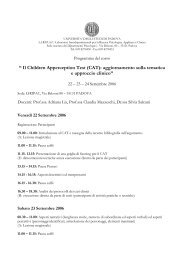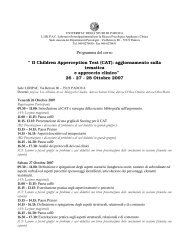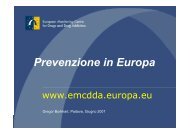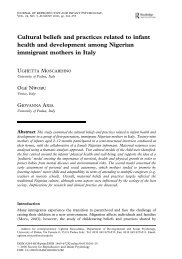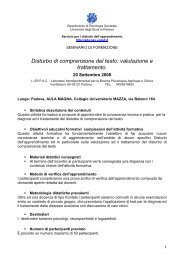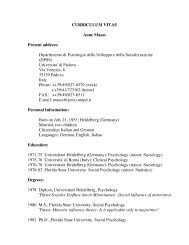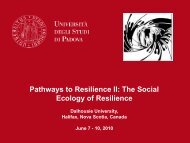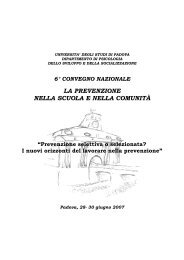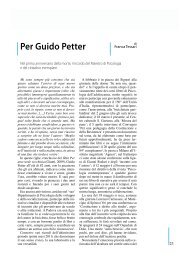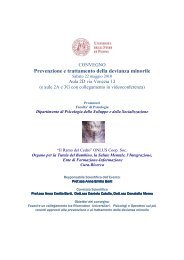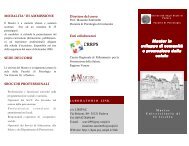Social cognition and moral cognition in bullying: What's ... - DPSS
Social cognition and moral cognition in bullying: What's ... - DPSS
Social cognition and moral cognition in bullying: What's ... - DPSS
Create successful ePaper yourself
Turn your PDF publications into a flip-book with our unique Google optimized e-Paper software.
that is their thoughts, beliefs <strong>and</strong> <strong>in</strong>tentions that guide social behavior. Our data are<br />
consistent with results reported by Sutton et al. (1999b). Moreover, several authors share<br />
the idea that victims show deficits <strong>in</strong> areas like social skills, social problem solv<strong>in</strong>g,<br />
assertiveness, <strong>and</strong> emotional regulation (e.g., Champion, Vernberg, & Shipman, 2003;<br />
Kochenderfer & Ladd, 1997; Mahady-Wilton, Craig, & Pepler, 2000; Olweus, 1993;<br />
Perry, Kusel, & Perry, 1988). F<strong>in</strong>ally, the results obta<strong>in</strong>ed <strong>in</strong> the social <strong>cognition</strong> task by<br />
the defender group should be noted. These children, <strong>in</strong> fact, showed high levels of<br />
performance <strong>in</strong> all the stories, <strong>and</strong> especially <strong>in</strong> the cognitive stories. Moreover, the<br />
score <strong>in</strong> the defender scale of the PRQ correlated positively with all the scores <strong>in</strong> the<br />
social <strong>cognition</strong> task, thus suggest<strong>in</strong>g that the adoption of this k<strong>in</strong>d of prosocial <strong>and</strong><br />
helpful behavior requires a high level of social ability <strong>and</strong> a well-developed<br />
underst<strong>and</strong><strong>in</strong>g of both cognitive <strong>and</strong> emotional states of others. However, the fact that<br />
the bully<strong>in</strong>g score also correlated with the social <strong>cognition</strong> task, aga<strong>in</strong>, confirms that<br />
hav<strong>in</strong>g a good theory of m<strong>in</strong>d, by itself, does not necessarily mean that this ability will<br />
be used to act prosocially (Arsenio & Lemerise, 2001).<br />
Bully<strong>in</strong>g <strong>and</strong> <strong>moral</strong> disengagement<br />
As regards the third aim of the present study, the analysis of variance on <strong>moral</strong><br />
disengagement showed higher levels of the tendency to disengage self-sanctions <strong>and</strong><br />
justify the use of aggressive behaviors <strong>in</strong> all the aggressive roles <strong>and</strong>, <strong>in</strong> particular, <strong>in</strong><br />
bullies. These results confirmed the role of specific cognitive mechanisms <strong>in</strong> the<br />
regulation of social conduct, such as the <strong>moral</strong> disengagement mechanisms that allow<br />
the assumption of violent behaviors (Bacch<strong>in</strong>i et al., 1998; Caprara et al., 1995;<br />
25



